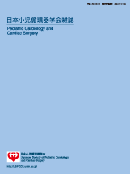Volume 28, Issue 6
Displaying 1-11 of 11 articles from this issue
- |<
- <
- 1
- >
- >|
Editorial
-
2012Volume 28Issue 6 Pages 293-294
Published: 2012
Released on J-STAGE: November 26, 2012
Download PDF (584K)
Review
-
2012Volume 28Issue 6 Pages 295-305
Published: 2012
Released on J-STAGE: November 26, 2012
Download PDF (1712K)
Original
-
2012Volume 28Issue 6 Pages 306-310
Published: 2012
Released on J-STAGE: November 26, 2012
Download PDF (812K)
Case Reports
-
2012Volume 28Issue 6 Pages 315-319
Published: 2012
Released on J-STAGE: November 26, 2012
Download PDF (930K) -
2012Volume 28Issue 6 Pages 320-325
Published: 2012
Released on J-STAGE: November 26, 2012
Download PDF (1420K) -
2012Volume 28Issue 6 Pages 328-333
Published: 2012
Released on J-STAGE: November 26, 2012
Download PDF (1818K)
Editorial Comments
-
2012Volume 28Issue 6 Pages 311-312
Published: 2012
Released on J-STAGE: November 26, 2012
Download PDF (595K) -
2012Volume 28Issue 6 Pages 313-314
Published: 2012
Released on J-STAGE: November 26, 2012
Download PDF (573K) -
2012Volume 28Issue 6 Pages 326-327
Published: 2012
Released on J-STAGE: November 26, 2012
Download PDF (689K) -
2012Volume 28Issue 6 Pages 334-335
Published: 2012
Released on J-STAGE: November 26, 2012
Download PDF (570K) -
2012Volume 28Issue 6 Pages 336-337
Published: 2012
Released on J-STAGE: November 26, 2012
Download PDF (603K)
- |<
- <
- 1
- >
- >|
